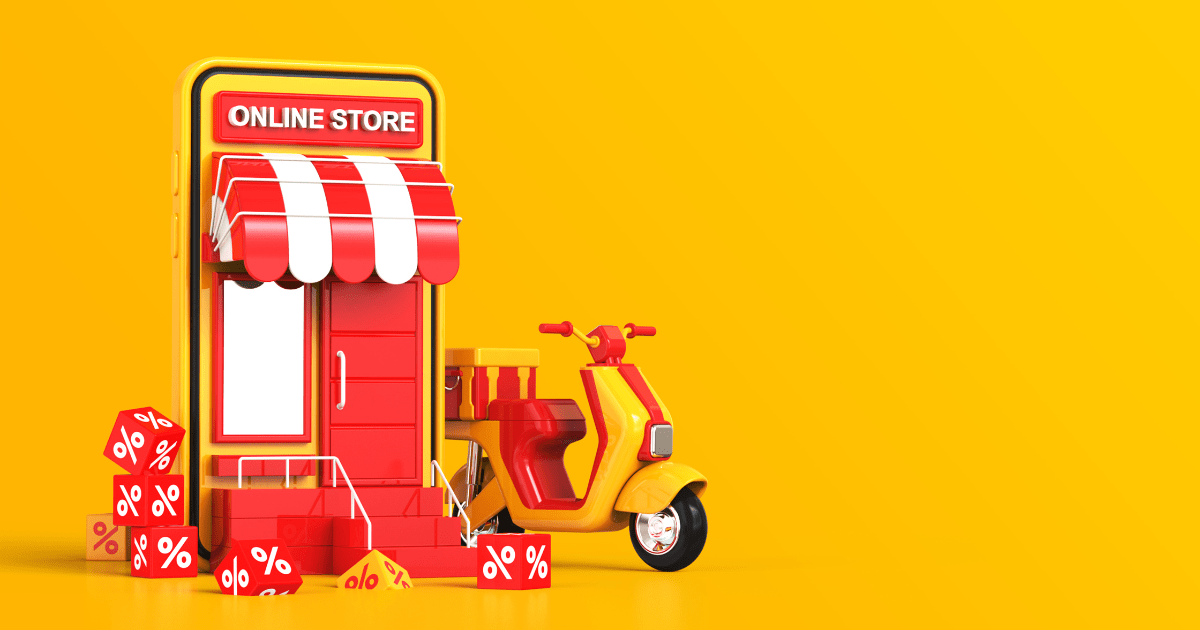Do you want to start an Etsy shop in 2024? You’re about to embark on an exciting journey that can help you turn your passion into a profitable business. However, before you start selling, it’s important to understand the basics of setting up an Etsy shop.
In this comprehensive guide, we’ll walk you through everything you need to know to get started, from choosing a name for your shop to creating your first product listing. We’ll also share some tips and tricks to help you succeed on Etsy. So, whether you’re a seasoned seller or a beginner, read on to learn how to set up an Etsy shop that stands out from the crowd.
What is Etsy?
Etsy is a popular online marketplace that connects creative individuals with buyers from all over the world. It is an excellent platform for artists, crafters, and vintage lovers to showcase and sell their unique products. Setting up an Etsy shop is easy, but there are a few essential steps you need to take to optimize your shop and make it stand out. In this article, we will provide a comprehensive guide to setting up an Etsy shop and what you need to know before selling.
How to start an Etsy shop
Step 1: Sign in or Create an Etsy Account
The first step to setting up an Etsy shop is to sign in or create an Etsy account. If you already have an account, you can log in and start setting up your shop. If you don’t have an account, you can create one by clicking the “Register” button on the Etsy homepage. You will need to provide some basic information, such as your name, email address, and password.
Step 2: Optimize Your Etsy Shop Profile
Your Etsy shop profile is the first thing potential customers will see when they visit your shop. It is essential to have a complete and optimized shop profile to establish trust and credibility with potential customers. Here are some tips for optimizing your Etsy shop profile:
– Add a profile picture: Your profile picture should be a clear and professional headshot of yourself or your brand logo.
– Write a bio: Your bio should be a brief description of your brand and what you do. It should be engaging and informative.
– Add a banner image: Your banner image should be a high-quality image that represents your brand and your products.
– Include your contact information: Make sure to include your email address and social media handles so that customers can contact you easily.
Step 3: Write an Impressive “About” Page
Your “About” page is where you can tell your brand’s story and connect with potential customers. It is an opportunity to establish trust and credibility with your audience. Here are some tips for writing an impressive “About” page:
– Be authentic and personal: Your “About” page should reflect your personality and your brand’s values.
– Include your brand’s story: Explain how and why you started your brand and what makes it unique.
– Share your process: If you create handmade products, share your process with your audience. It can help them understand the value of your products.
– Use high-quality visuals: Include high-quality images and videos on your “About” page to make it more engaging.
Step 4: Set Your Shop Preferences
Etsy provides several shop preferences that you can set up to customize your shop and make it more user-friendly. Here are some essential shop preferences you should set up:
– Shipping preferences: Set up your shipping preferences, including shipping rates, processing times, and shipping destinations.
– Language and currency: Choose the language and currency that you want to use for your shop.
– Shop announcement: Use this feature to create an announcement that will appear at the top of your shop page.
Step 5: Choose Your Shop Name
Your shop name is the first thing potential customers will see when they search for your products on Etsy. It is essential to choose a unique and memorable shop name that reflects your brand’s identity. Here are some tips for choosing the best shop name for your brand:
– Keep it simple and easy to remember: Your shop name should be easy to spell and pronounce.
– Make it unique: Avoid using generic names that can be confused with other brands.
– Reflect your brand’s identity: Your shop name should reflect your brand’s values and personality.
– Consider SEO: Choose a shop name that includes relevant keywords that your potential customers might search for.
Step 6: Keep Your Shop Policy Simple
Your shop policy is a set of rules that you establish for your shop, including shipping, returns, and refunds. It is essential to keep your shop policy simple and easy to understand to avoid confusion and disputes with customers. Here are some tips for creating a simple and effective shop policy:
– Keep it concise: Your shop policy should be brief and to the point. Avoid using legal jargon and complicated language.
– Be transparent: Be clear about your shipping rates, processing times, and return policy.
– Communicate with your customers: If you encounter any issues with customers, communicate with them openly and try to find a solution that works for both parties.
Step 7: Add Product Listings to Your Shop
The most critical aspect of your Etsy shop is your product listings. It is essential to create compelling and informative product listings that will attract potential customers and encourage them to buy. Here are some tips for creating effective product listings:
– Use high-quality images: Your product images should be clear and high-quality. Use natural light and a simple background to showcase your products.
– Write a catchy title: Your product title should be descriptive, concise, and catchy.
– Include all relevant information: Make sure to include all relevant information about your product, including size, material, and care instructions.
– Set a fair price: Price your products fairly based on the time and materials you used to create them.
Step 8: Add Relevant Categories and Attributes
Etsy provides several categories and attributes that you can use to categorize your products and make them more discoverable. It is essential to choose the most relevant categories and attributes for your products to increase their visibility. Here are some tips for choosing relevant categories and attributes:
– Be specific: Choose the most specific category that describes your product to avoid getting lost in a sea of similar products.
– Use all relevant attributes: Use all relevant attributes to provide more information about your product and make it more discoverable.
– Consider SEO: Choose categories and attributes that include relevant keywords that your potential customers might search for.
Step 9: Maximize Your Tags
Tags are keywords that you can use to describe your products and make them more discoverable on Etsy. It is essential to choose effective tags that will attract potential customers and increase your visibility. Here are some tips for choosing effective tags:
– Be specific: Use specific tags that describe your product and its features.
– Use all available tags: Etsy provides 13 tags for each product listing. Use all available tags to provide as much information about your product as possible.
– Consider SEO: Choose tags that include relevant keywords that your potential customers might search for.
Step 10: Write Effective Product Descriptions
Product descriptions are critical for providing information about your products and convincing potential customers to buy. It is essential to write effective and engaging product descriptions that will entice potential customers. Here are some tips for writing effective product descriptions:
– Be descriptive: Use descriptive language to provide as much information about your product as possible.
– Highlight the benefits: Explain how your product can solve a problem or fulfill a need for your potential customers.
– Use bullet points: Use bullet points to break down the information into digestible chunks.
– Include a call-to-action: Encourage potential customers to buy by including a call-to-action at the end of your product description.
Step 11: Choose How You’ll Get Paid
Etsy provides several payment options, including credit cards, Etsy gift cards, and PayPal. It is essential to choose the payment option that works best for you and your customers. Here are some tips for choosing the best payment option:
– Consider fees: Each payment option has different fees. Make sure to choose the payment option that has the lowest fees for your shop.
– Consider your customers’ preferences: Choose the payment option that your customers are most likely to use.
– Consider security: Choose a payment option that is secure and protects your customers’ personal and financial information.
Step 12: Set Up Billing
Setting up billing is essential to keep your shop running smoothly. You will need to provide a valid credit card or PayPal account to pay for Etsy fees and other expenses. Here are some tips for setting up billing:
– Keep track of your expenses: Keep track of your shop fees and other expenses to avoid surprises at the end of the month.
– Set up automatic payments: Set up automatic payments to avoid missing any payments or incurring late fees.
– Monitor your billing history: Check your billing history regularly to make sure that all charges are accurate and up-to-date.
What You Need to Know Before Selling on Etsy
Now that you have set up your Etsy shop, there are a few things you need to know before you start selling:
– Etsy fees: Etsy charges fees for listing, selling, and processing payments. Make sure to read the Etsy fees policy and calculate your expenses before you start selling.
– Shipping: Shipping your products can be challenging and expensive. Make sure to set up your shipping preferences and rates carefully to avoid any issues with customers.
– Competition: Etsy is a highly competitive marketplace. Make sure to differentiate your brand and your products from others by offering unique and high-quality products, excellent customer service, and competitive pricing.
In conclusion, setting up an Etsy shop can be a lucrative and rewarding experience. By following these essential steps, you can optimize your shop and make it stand out from the competition, helping you attract more customers and grow your business. Remember to keep your shop policies simple, use effective tags and product descriptions, and choose the payment option that works best for you and your customers. With hard work and dedication, you can turn your hobby into a successful business on Etsy.




